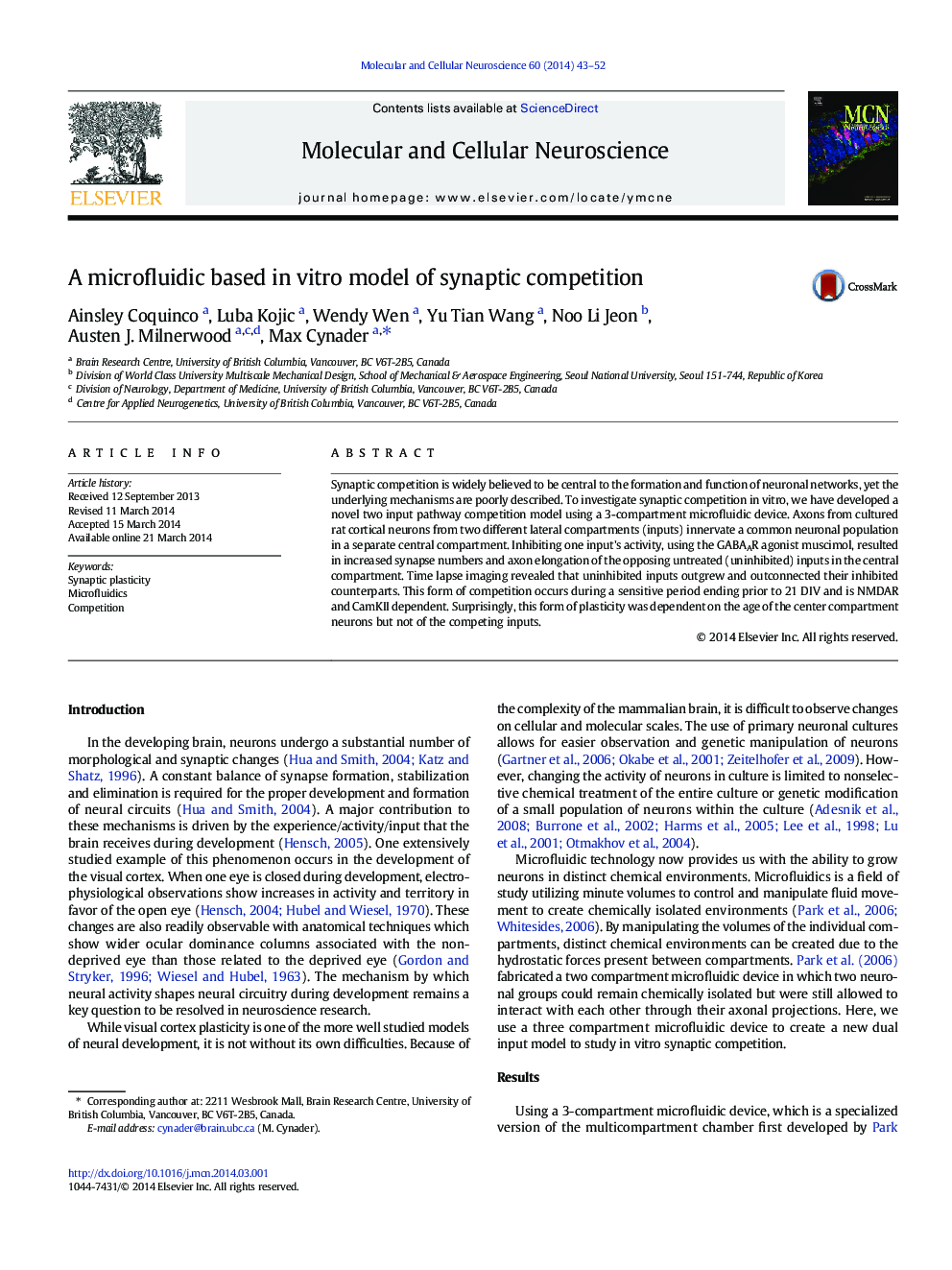| Article ID | Journal | Published Year | Pages | File Type |
|---|---|---|---|---|
| 2198477 | Molecular and Cellular Neuroscience | 2014 | 10 Pages |
Synaptic competition is widely believed to be central to the formation and function of neuronal networks, yet the underlying mechanisms are poorly described. To investigate synaptic competition in vitro, we have developed a novel two input pathway competition model using a 3-compartment microfluidic device. Axons from cultured rat cortical neurons from two different lateral compartments (inputs) innervate a common neuronal population in a separate central compartment. Inhibiting one input's activity, using the GABAAR agonist muscimol, resulted in increased synapse numbers and axon elongation of the opposing untreated (uninhibited) inputs in the central compartment. Time lapse imaging revealed that uninhibited inputs outgrew and outconnected their inhibited counterparts. This form of competition occurs during a sensitive period ending prior to 21 DIV and is NMDAR and CamKII dependent. Surprisingly, this form of plasticity was dependent on the age of the center compartment neurons but not of the competing inputs.
